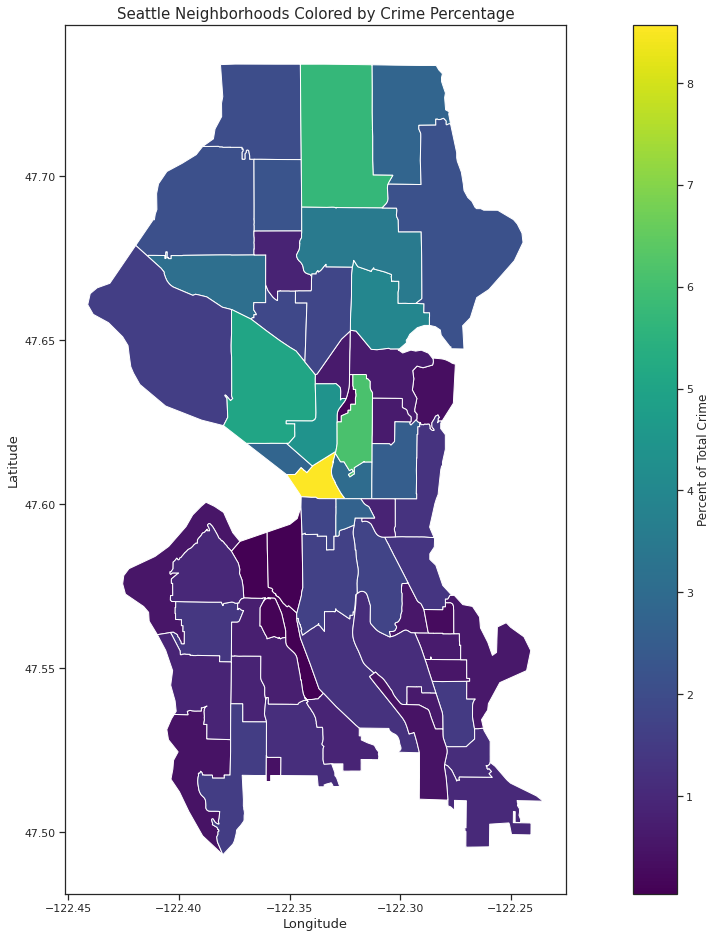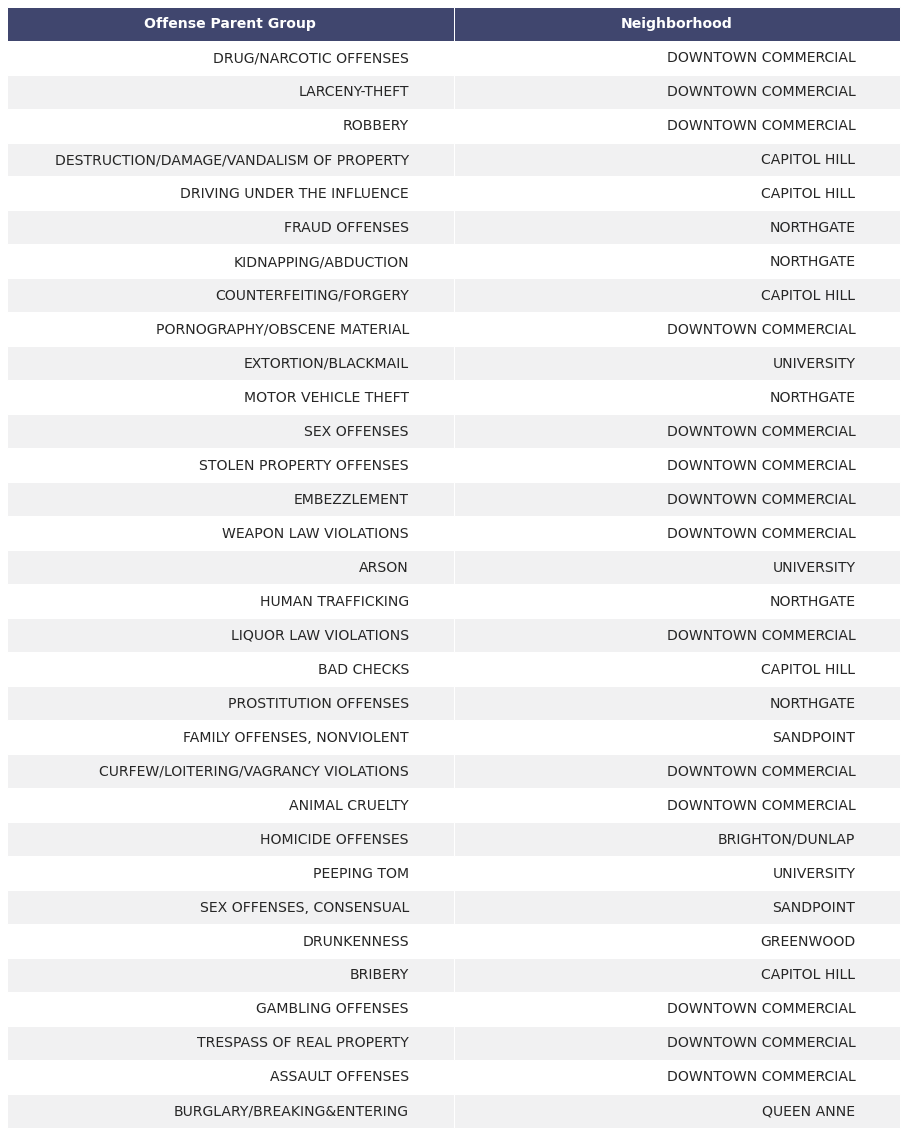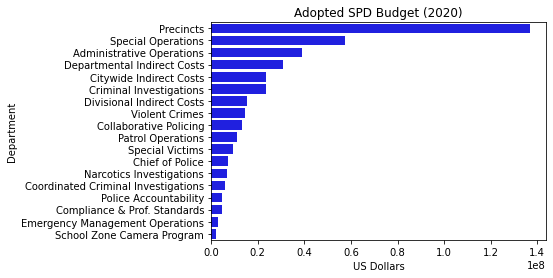The heatmap to the left visualizes how the offense count for each year from 2008 to 2020 compares to the annual average across all years for each crime type.
For example, we see that the year 2020 has especially high levels of Fraud Offenses compared to other years. This may be reflective of the worldwide COVID-19 pandemic. Interestingly, we see that 2020 had less Family Offenses, Nonviolent compared to the mean offense count for this type of crime across all years.
We can also see that that 2008 has higher than average levels of Embezzlement and Gambling Offenses. These trends may reflect the 2008 Financial Crisis.
To explore more trends over time, use the following interactive visualization to filter by Offense Type to see how offense counts change over time.




